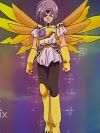reading and writing 2 supletorio
|
|
Título del Test: reading and writing 2 supletorio Descripción: examen final |



| Comentarios |
|---|
NO HAY REGISTROS |
|
1.) shah was traveling through....................................... when he fell off his bike. a village. bostwana. the mountains. 2.) shah's ankle was swollen because. the leeches bit him. he rode his bycicle too far. he cut his ankle and didn't wash or bandage it. 3.) shah needed a hospital. he couldn't get to one soon enough because. he didn't have a donkey. it would take too long on his bicycle. his car was too slow. 4.) Ntemidisang tried to make shah laugh. he....................................... wanted shah to stop thinking about the leeches on his ankle. wanted shah to like him and think he was funny. was nervous and didn't know what to do while they waited. 5.) the leeches helped shah because they................................. cured him by healing the infection in his ankle. took away the swelling so he could bike to the hospital. made him relax. 6.) check the statement that best describes the main idea of the article. you need to leave school to learn creative thinking skills. Math teachers need to teach more creative thinking because sometimes math has many interesting answers. schools can and must teach creative skills because the world needs creative thinkers. creative people should become teachers so that we can have more creative teaching in our schools. 7.) creative skills are importan because................ they help us make new things. they help us solve everyday problems. they help us learn math better. 8.) schools often do not teach creative thinking because..................... students do not want to learn creative thinking. teachers do not know how to teach creative thinking. creative thinking is difficult to measure. 9.) creative thinking......................... is impossible to understand. is putting ideas together in new ways. results in original answers. 10.) creative thinking questions....................... usually have one correct answer. have many possible answers. ask you to put information together in new ways. |






